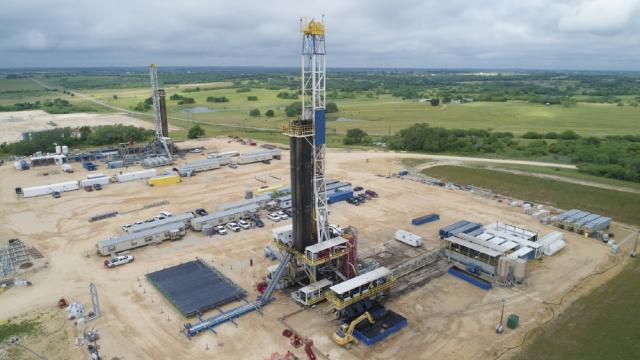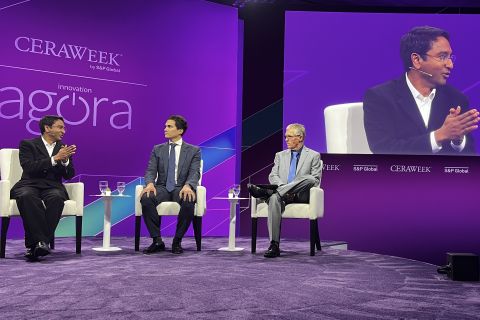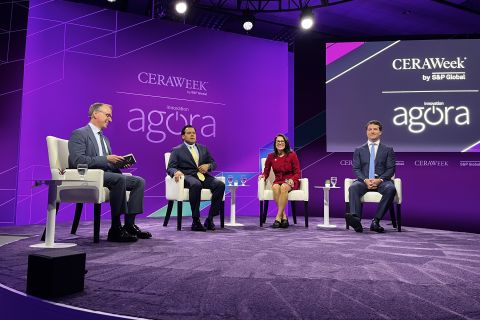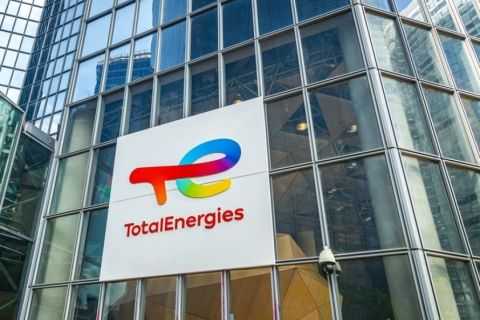
ConocoPhillips produced 221,000 boe/d in the Eagle Ford during second-quarter 2019. (Source: ConocoPhillips)
ConocoPhillips Co. grew production from its so-called “Lower 48 Big 3” unconventional assets by 26% to 367,000 barrels of oil equivalent per day (boe/d) during second-quarter 2019, compared to a year earlier.
Production from the company’s liquids-rich Eagle Ford acreage was 221,000 boe/d for the second quarter. Meanwhile, Bakken production for the quarter reached 98,000 boe/d with the Delaware Basin contributing 48,000 boe/d.
In all, the independent oil and gas producer—which also has operations in the Asia-Pacific, Europe, South America, Africa and the Middle East regions—said production (excluding Libya) increased by 79,000 boe/d to 1.29 million boe/d.
For the full year, the company expects to produce between 1.31 million boe/d and 1.34 million boe/d.
“We now expect Big 3 production in 2019 to average 360,000 barrels per day (bbl/d) up from our initial expectation of 350,000,” ConocoPhillips COO Matt Fox said July 30 on a call with analysts.
RELATED: ConocoPhillips Adjusted Profit Falls On Lower Crude Prices
Big 3
Growth from the assets, which represents that biggest part of ConocoPhillips’ production base, comes as the company works to align rig counts with optimal long-term production plateaus for each area. ConocoPhillips said it plans to add a seventh rig in the Eagle Ford this year and may add another next year.
“We see the Big 3 assets in quite different stages of the lifecycle. Bakken is essentially at plateau,” Fox said, noting the company expects it to produce in the 80,000-90,000 bbl/d range “for a long time to come. We don’t really intend to have incremental growth there.”
The Eagle Ford, on the other hand, is in late-stage growth and the additional rig is expected to aid in reaching optimum plateau, he said. But the Permian, for ConocoPhillips, “is much earlier in the lifecycle. That has a significant growth ahead of it and it will be several years before we reach plateau there.”
Fox, who said the company plans to elaborate more on its strategy during its Nov. 19 analyst and investor meeting, said the company will increase Permian Basin activity in the coming years as it moves from the current mode of optimizing well spacing and stacking and prioritizing zones. “Once we get that completed then we’ll increase to a more sustainable rig count to build toward plateau,” he said.
Alaska
As production climbs in the Lower 48, progress is also being made farther north in Alaska, where ConocoPhillips called results from its Greater Willow area and Narwhal appraisal tests “encouraging.” First-half 2019 work included drilling seven appraisal wells, a series of horizontal production wells, injectivity and interference tests.
“The results have been encouraging for both Willow and the Narwhal Trend,” Fox said. “Based on these positive results, we’re also taking the opportunity to drill an additional unbudgeted horizontal well from an existing Alpine drillsite into the Narwhal trend later this year.”
Michael Hatfield, president of ConocoPhillips’ Alaska, Canada and Europe operations, added a final investment decision on Willow is expected in 2021 with first oil probably sometime in 2025-2026.
Adding to high hopes for Alaskan operations was the second-quarter bolt-on acquisition that will move the Nuna discovery into ConocoPhillips’ hands. The agreement, expected to close in the third quarter, with Caelus Natural Resources Alaska was announced in June. The North Slope acreage is adjacent to ConocoPhillips’ Kuparuk Field.
“The discovered resources on 21,000 acres, it’s in our backyard. … It’s very low cost of supply in the low $30s. It’s $100 million for 100 million barrels,” Hatfield said referring to Nuna. “It’ll be developed from pads both that exist at Kuparuk and a pad at Nuna where there is already gravel and a road to that pad in place.”
The rest of the required facilities can be built in a single season, he added. Currently, plans are to carry out appraisal work over the next couple of years, targeting first oil in 2022.
“The development will be using existing drilling and completions technology and the development itself will be incorporated as part of our Kuparuk program, so it won’t be incremental to that,” Hatfield said. “So, we’re very excited about this low cost of supply bolt-on acquisition.”
The 2020 Alaska exploration plan, which is still being devised, will primarily focus on understanding the extent of Willow to fully size facilities, he added. The plan also includes drilling a prospect, called Harpoon, to the southwest.
Louisiana Chalk
The news, however, wasn’t as upbeat for another part of ConocoPhillips’ U.S. portfolio—the Louisiana Austin Chalk, where three of four wells were tested.
“As we’ve brought the wells on, the petroleum system isn’t working as effectively as we hoped it would,” Fox said. “The chalk hasn’t dewatered to the extent that’s required to get high enough production rates.”
High water cuts in unconventional wells in plays are not atypical and by itself is not a disqualifier, he explained. However, ConocoPhillips has seen the water cut at over 90% with the oil rate at about 100 bbl/d.
“It’s just unlikely to be enough to justify development in that part of the play,” Fox said. But there are other targets in the Wilcox and Tuscaloosa Marine Shale. “So, the acreage is not condemned but that primary target in the Austin Chalk doesn’t look encouraging just now.”
The additional exploration and appraisal drilling in Alaska and rig addition in the Eagle Ford bumped ConocoPhillips’ operating plan capital to an anticipated $6.3 billion, up from $6.1 billion, for the year.
Velda Addison can be reached at vaddison@hartenergy.com.
Recommended Reading
CERAWeek: Large Language Models Fuel Industry-wide Productivity
2024-03-21 - AI experts promote the generative advantage of using AI to handle busywork while people focus on innovations.
AI in Oil: Revolution’s Coming, but Tech Adoption Remains Tentative
2024-04-05 - CERAWeek experts say AI will disrupt oil and gas jobs while new opportunities will emerge as the industry braces for an AI-driven workflow transformation.
CERAWeek: AI, Energy Industry Meet at Scary but Exciting Crossroads
2024-03-19 - From optimizing assets to enabling interoperability, digital technology works best through collaboration.
The Pandora's Box of AI: Regulation or Self-governance?
2024-04-04 - Experts urge policymakers to learn from the failure to rein in the internet and move quickly to regulate AI.
TotalEnergies Rolling Out Copilot for Microsoft 365
2024-02-27 - TotalEnergies’ rollout is part of the company’s digital transformation and is intended to help employees solve problems more efficiently.






